The history-making Dawn mission, part of NASA’s Discovery Program and managed by NASA’s Jet Propulsion Laboratory (JPL) in Pasadena, California, left Earth on Sept. 27, 2007, to study the two largest objects in the asteroid belt, asteroid Vesta and dwarf planet Ceres, providing scientists with an opportunity to learn more about the solar system’s formation. Dawn used solar electric propulsion for most of its trajectory control, supplemented by a gravity-assist from Mars. Dawn spent 14 months orbiting Vesta before moving on to orbit Ceres, the first spacecraft to orbit two different celestial bodies. It observed the dwarf planet until October 2018, when it ran out of attitude control fuel. The Dawn mission proved the value of ion propulsion to explore bodies in the solar system.
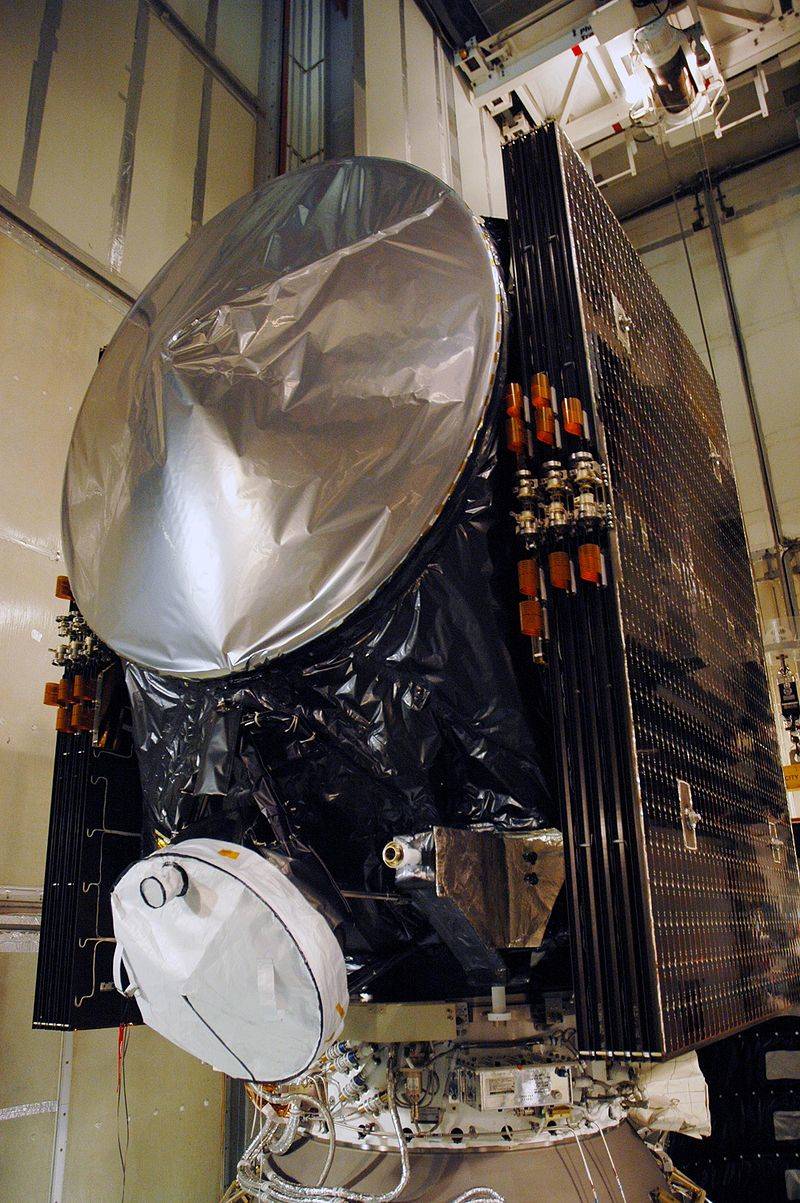
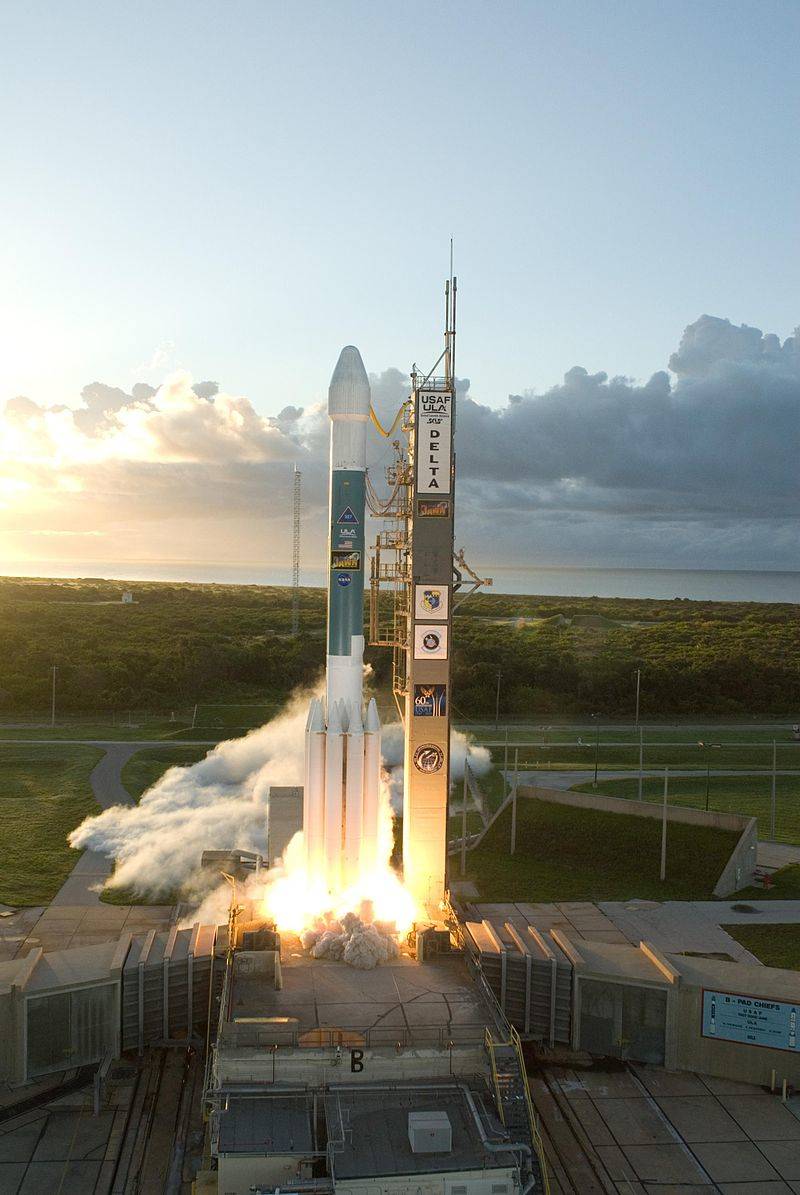
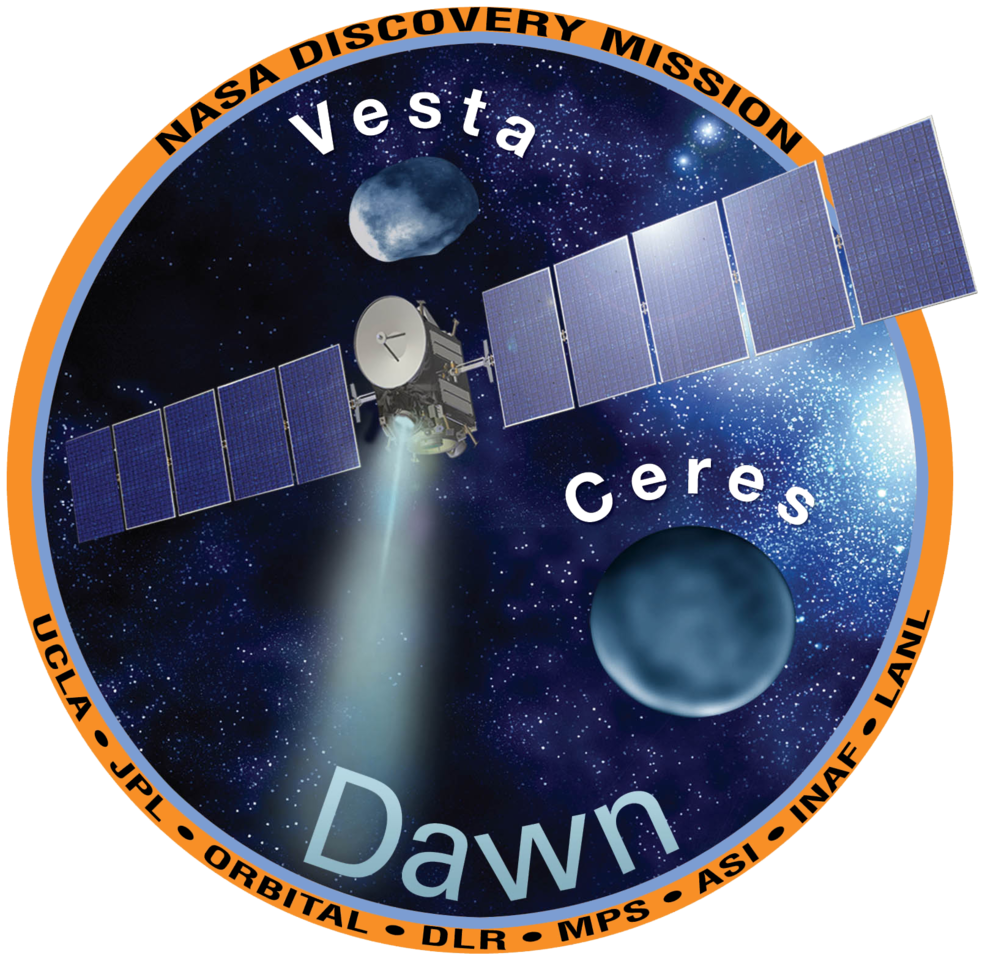
Left: The Dawn spacecraft during preflight preparations. Middle: Liftoff of the
Dawn spacecraft. Right: Official patch of the Dawn mission.
Managers named the ninth mission in the Discovery Program Dawn because they hoped it would reveal clues about the physical and chemical conditions in the earliest days of the solar system. Its two targets, the asteroid Vesta and the dwarf planet Ceres, the two largest objects in the main asteroid belt between the orbits of Mars and Jupiter, together comprise 45% of the mass in the asteroid belt. They have survived relatively intact from the solar system’s early days yet have remarkably different compositions, providing scientists with an opportunity to learn more about the processes of early planetary formation. Because chemical engines would have required a prohibitively large amount of fuel to enable Dawn’s dual-target mission to the asteroid belt, the spacecraft relied on solar electric propulsion instead, using an ion propulsion system with 937 pounds of Xenon gas as a fuel source and power from its solar arrays. Between 1998 and 2001, Dawn’s predecessor the Deep Space-1 spacecraft demonstrated the utility of ion propulsion for an interplanetary mission by operating its ion engine for more than 16,000 hours, enabling it to fly by the asteroid Braille and the comet Borrelly.
Dawn lifted off on Sept. 27, 2007, atop a Delta rocket from Launch Complex 17B at Cape Canaveral Air Force Station, now Cape Canaveral Space Force Station, in Florida. After insertion into heliocentric orbit, Dawn unfurled its solar arrays, the most powerful flown on an interplanetary mission. For the next 80 days, flight managers checked out Dawn’s systems including its three ion propulsion system thrusters and reaction wheel assemblies used for attitude control. A long-duration system test of one of the ion thrusters began on Nov. 6 and ended 165 hours later. Flight directors tested each of Dawn’s science instruments and found them in good working order. With the initial checkout complete, Dawn turned on one of its ion thrusters on Dec. 17, operating it until Oct. 31, 2008, to align the spacecraft for its gravity-assist encounter with Mars.
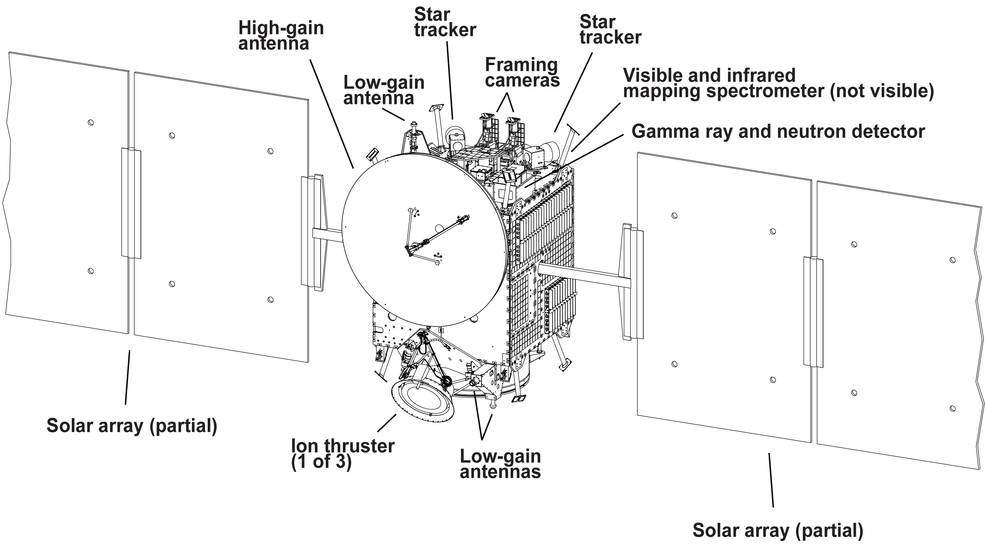
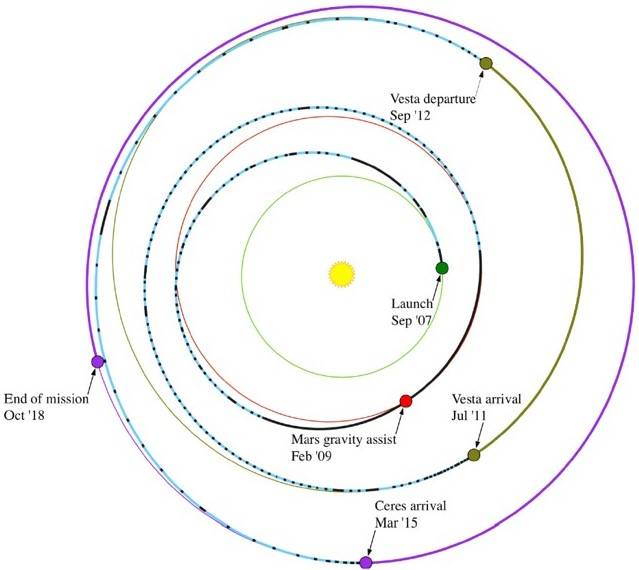
Left: Schematic of the Dawn spacecraft, illustrating its systems and science
experiments. Right: The trajectory of the Dawn spacecraft to investigate
asteroid Vesta and dwarf planet Ceres.
Dawn carried three instruments to study the geology, elemental and mineral composition, shape, surface topography, geomorphology and tectonic history of Vesta and Ceres. The spacecraft’s orbital characteristics aided in determining the bodies’ masses and gravity fields. The instruments included:
- A gamma-ray and neutron detector (GRaND).
- A visible and infrared (VIR) mapping spectrometer.
- Two identical framing cameras (FC).
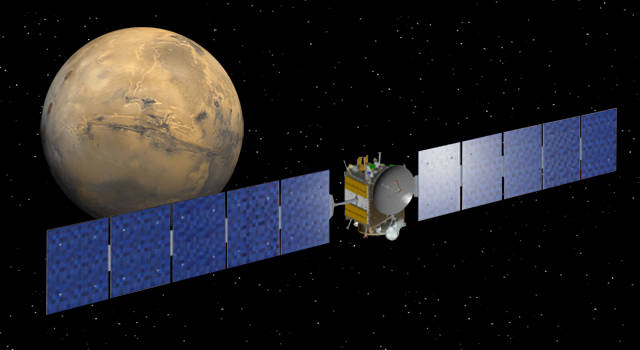
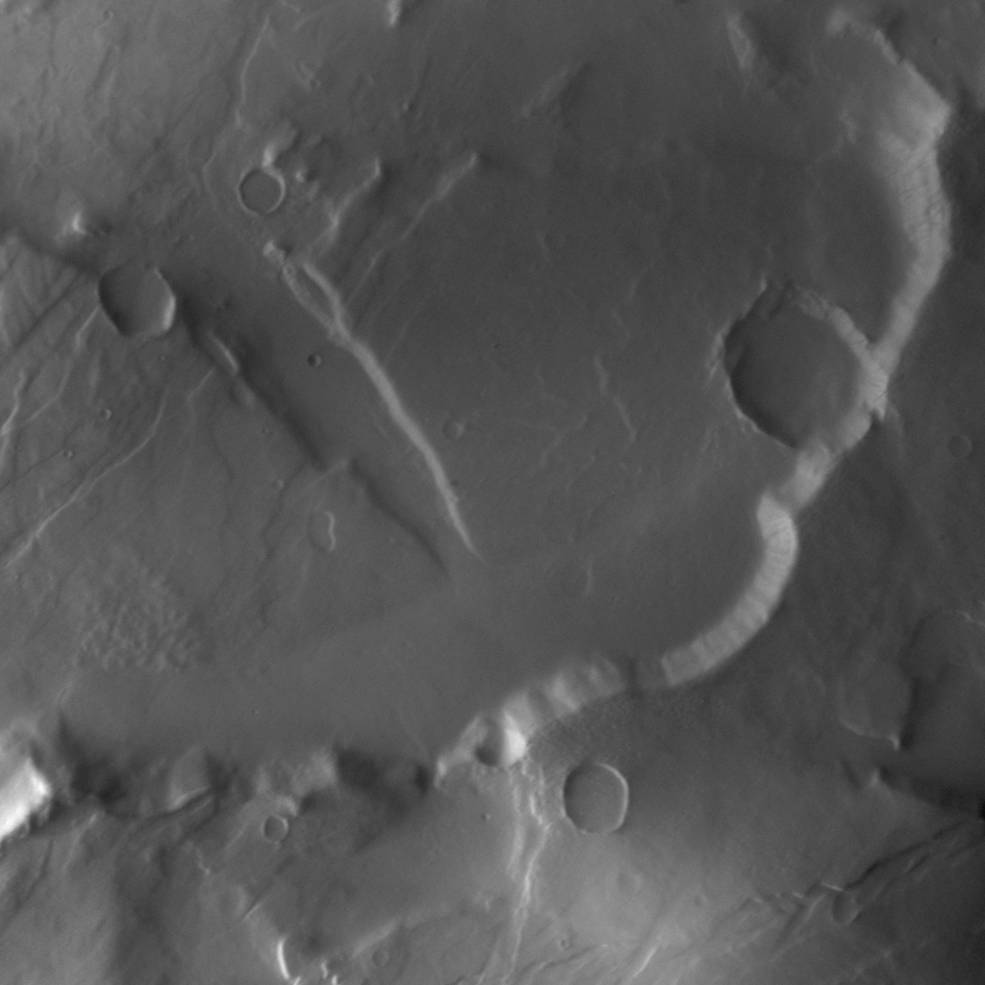
Left: Illustration of Dawn approaching Mars for a gravity-assist flyby.
Right: Image of Mars’ Tempe Terra taken during the gravity-assist flyby.
After thrusting nearly continuously for 270 days, Dawn turned its ion engine off and began a coast phase toward its first planetary encounter, a gravity-assist flyby of Mars. On Feb. 18, 2009, Dawn passed within 337 miles of the Red Planet. The close flyby not only increased Dawn’s velocity, it also changed the plane of its orbit, setting it up for its journey to Vesta. The Mars flyby also provided an opportunity to calibrate Dawn’s instruments. The GRaND instrument collected data that scientists correlated with similar data collected by Mars Odyssey in orbit around Mars. The spacecraft entered a safe mode due to problems with its star trackers, causing some loss of science calibration data, but the event did not impact the gravity-assist flyby itself. Dawn performed some tests of its thrusters after the flyby and resumed thrusting on June 8, 2009, continuing until arrival at Vesta. Although one of the spacecraft’s four reaction wheel assemblies failed on June 17, 2010, this did not affect operations as the three remaining ones adequately controlled its attitude.
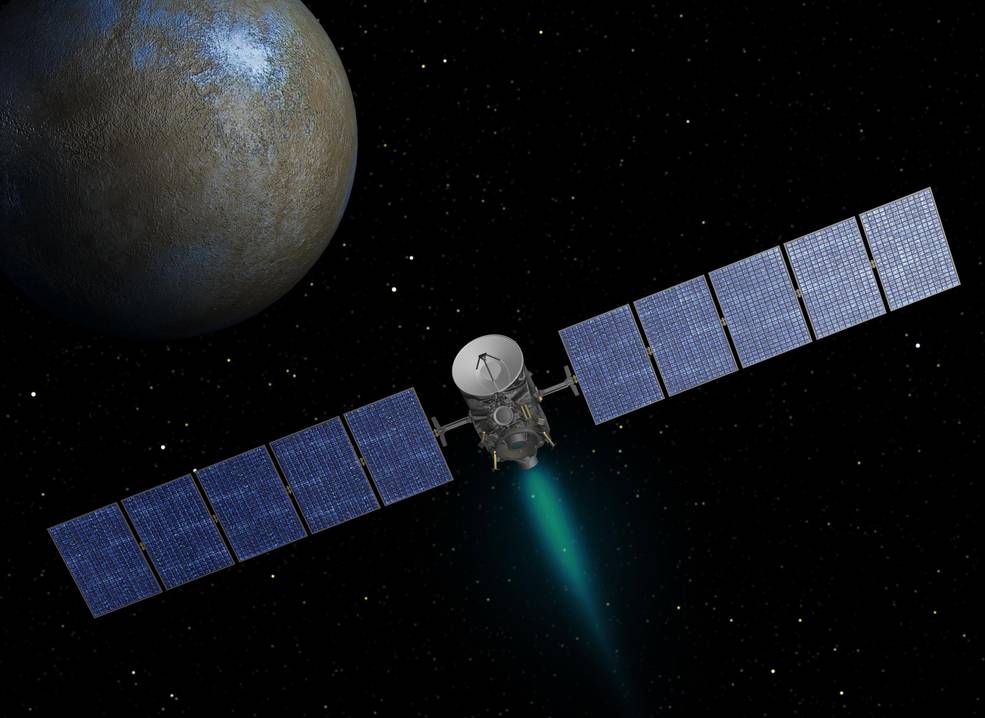
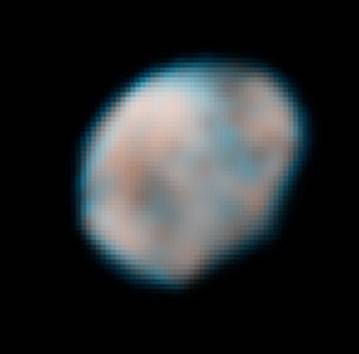
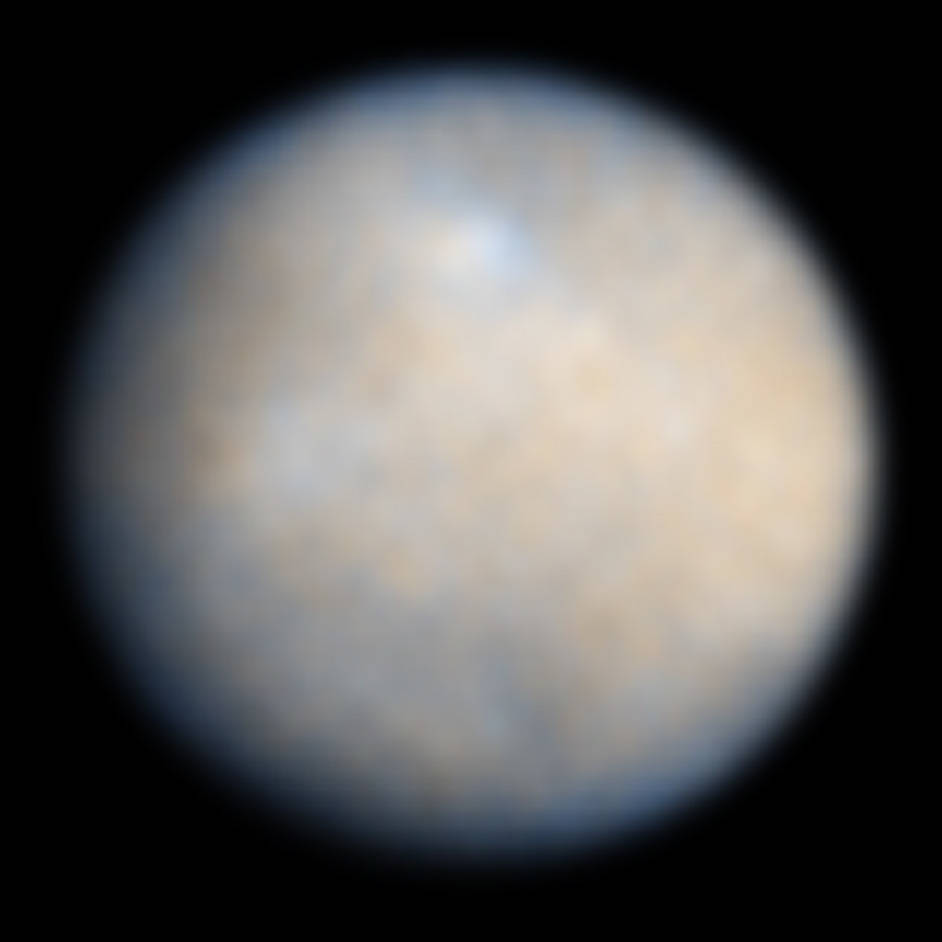
Left: Illustration of Dawn using its ion engine as it approaches Ceres. Middle: The highest resolution
image of Vesta before the Dawn mission, taken by the Hubble Space Telescope. Right: The highest
resolution image of Ceres before the Dawn mission, taken by the Hubble Space Telescope.
On May 3, 2011, Dawn acquired its first targeting image of Vesta still half a million miles away. As it approached the asteroid, the spacecraft returned progressively higher resolution images. Dawn used its ion thrusters to enter orbit around Vesta on July 16, 2011, the first spacecraft to orbit any main belt object. During its nearly 14 months at Vesta, Dawn operated in six distinct science orbits to optimize data gathering by its science instruments. The spacecraft returned more than 30,000 images of the asteroid, far more than planned and fully mapping its surface, and much additional science information. It determined that Vesta has an iron-nickel core, its size large enough to allow it to differentiate. Dawn confirmed Vesta as the parent body of the most numerous type of meteorite found on Earth.
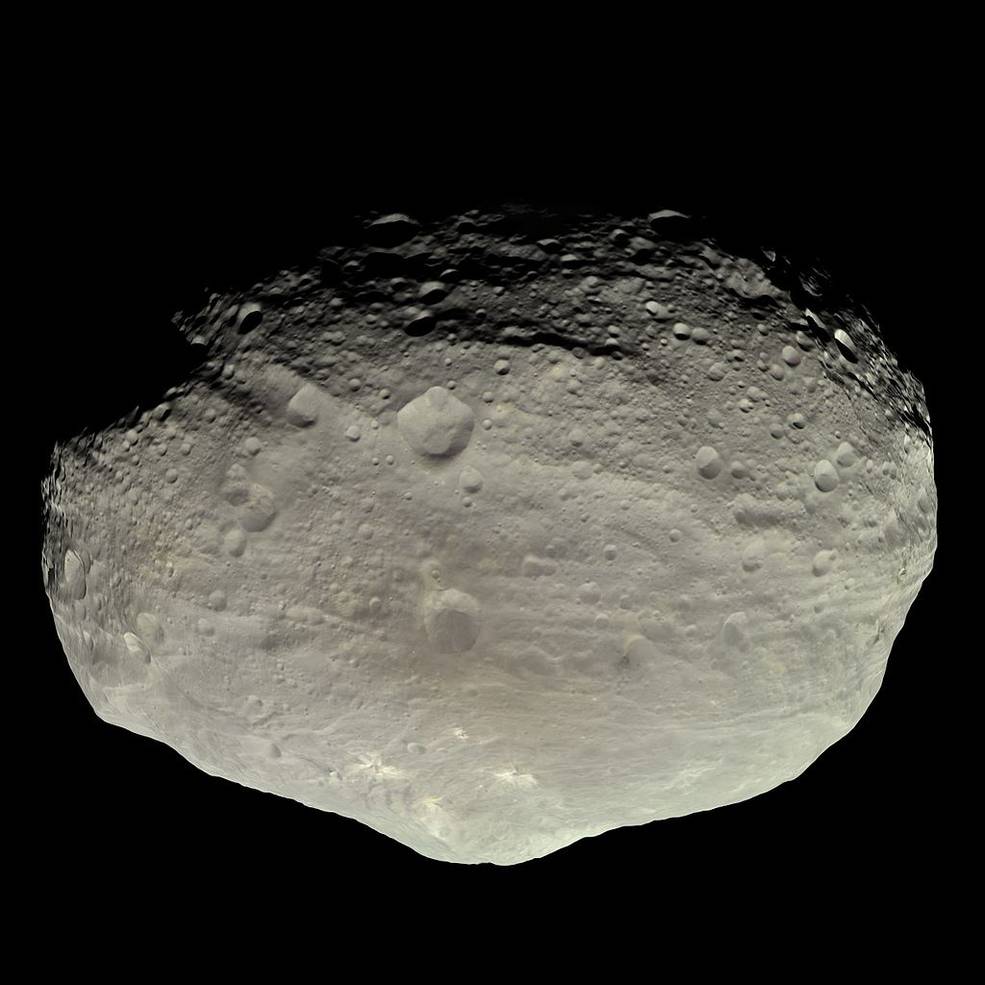
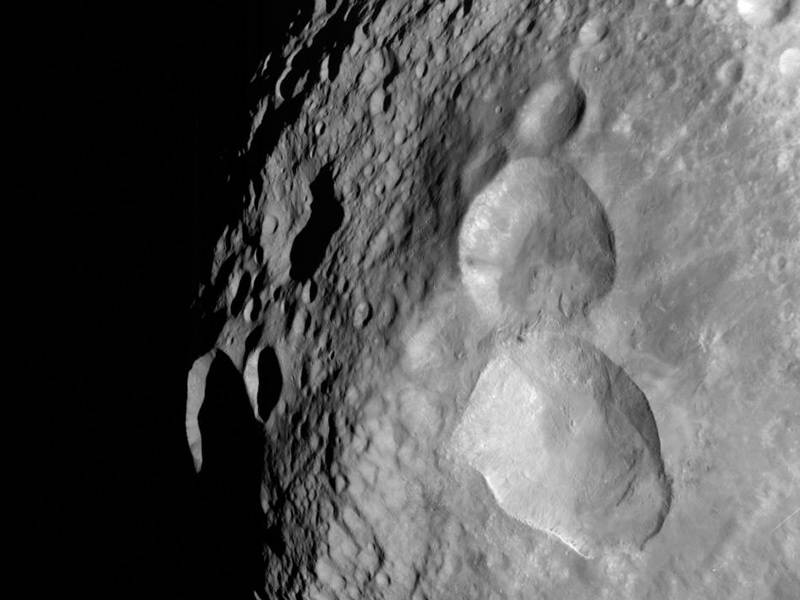
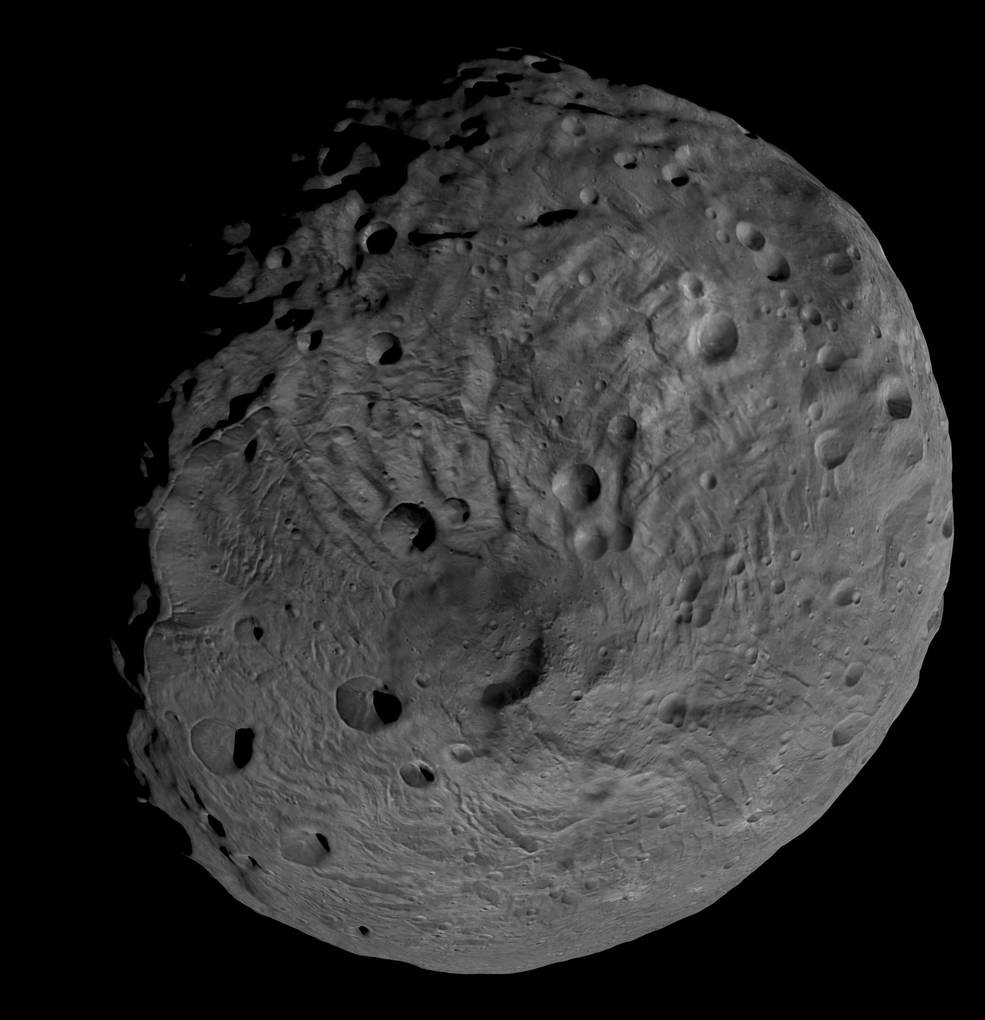
Left: Dawn image of Vesta from about 2,000 miles away. Middle: Closeup of the Snowman
feature on Vesta. Right: Vesta’s south polar region including Rheasilvia Crater.
On Sept. 5, 2012, Dawn departed Vesta using its ion engines to begin its two-and-a-half-year journey to its next and final destination, the dwarf planet Ceres, discovered in 1801 and the largest body in the asteroid belt. Although a second reaction wheel assembly failed just prior to Dawn’s departure from Vesta, flight controllers devised a work around to maintain the spacecraft’s attitude. The spacecraft’s ion thruster fired continuously – with a short interruption in September 2014 when it entered a safe mode – until it arrived in orbit around Ceres. Because of the two failed reaction wheel assemblies, Dawn took fewer images during its approach to Ceres than it did for Vesta, but by Jan. 26, 2015, those images exceeded the highest-resolution photographs from the Hubble Space Telescope. Dawn entered orbit around Ceres on March 6, 2015, marking the first time a single spacecraft orbited two different celestial bodies and, coming four months before New Horizons flew by dwarf planet Pluto, the first time a spacecraft observed a dwarf planet. Dawn completed the first topographic map of Ceres during this initial polar orbit. Over the next three years, Dawn repositioned itself into nine different orbits for different phases of its science mission. Its primary mission ended in June 2016, but managers granted it a one-year extension to continue its exploration of Ceres as the dwarf planet approached its perihelion, or closest distance to the Sun. Managers extended its mission once again in 2017, and placed it in a relatively stable orbit, ensuring that it would not impact the dwarf planet for at least 20 years and most likely 50 years. Dawn discovered bright spots on Ceres, such as Cerealia Facula inside the Occator Crater, salty deposits composed mainly of sodium carbonate that made their way to the surface in a slushy brine from within or below the crust. This computer-generated video made from images returned by Dawn simulate a flyover of Cerealia Facula. On Oct. 31, 2018, Dawn finally ran out of attitude control fuel, ending its highly successful and history-making mission.
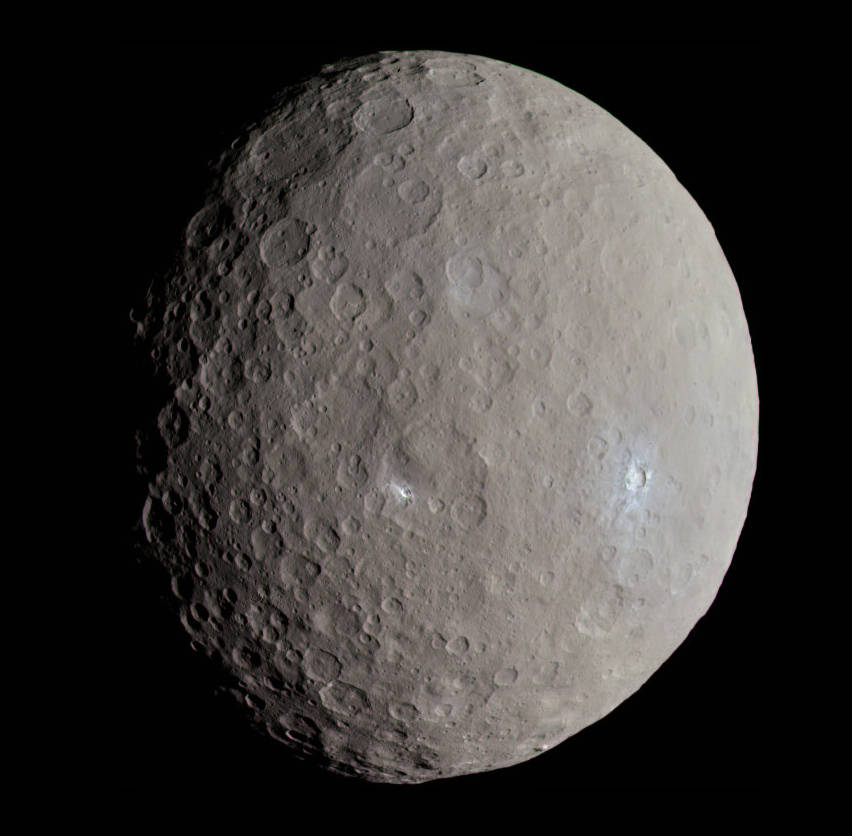
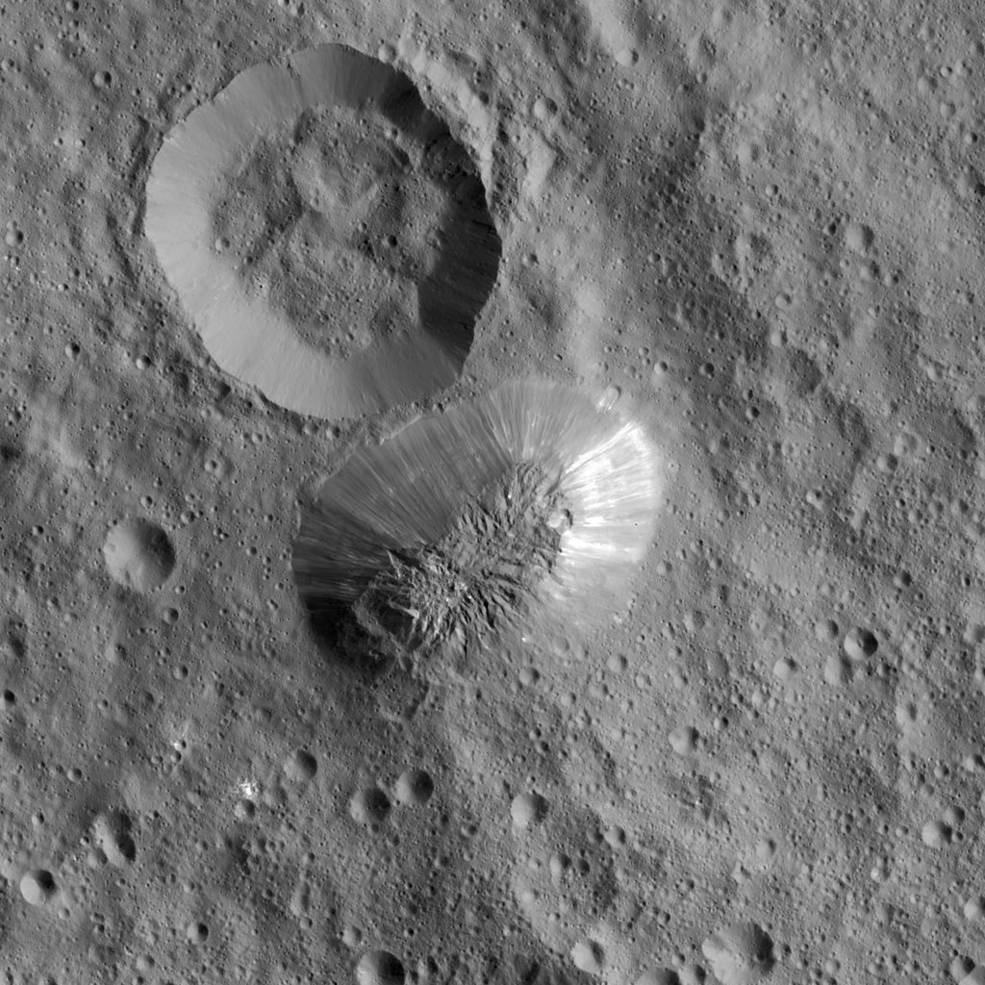
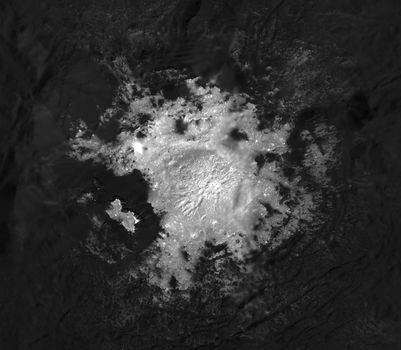
Left: Global view of Ceres from Dawn. Middle: The three-mile-high Ahuna Mons on Ceres.
Right: Bright spot Cerealia Facula in Occator Crater on Ceres.
Dawn’s legacy encompasses not only the scientific knowledge gained about the solar system’s early days by exploring Vesta and Ceres, but also includes its engineering accomplishments. The spacecraft’s ion propulsion system operated for 51,385 hours (5.9 years), or for about 54% of its time in space, allowing it to enter orbit around the two largest objects in the asteroid belt. More specifically, Dawn holds the honor as the first and so far only spacecraft to orbit an asteroid and a dwarf planet, and the first to reach a dwarf planet. The more than 100,000 images and other scientific data Dawn beamed back to Earth of its two distinct targets shed much light on the origins of the solar system.
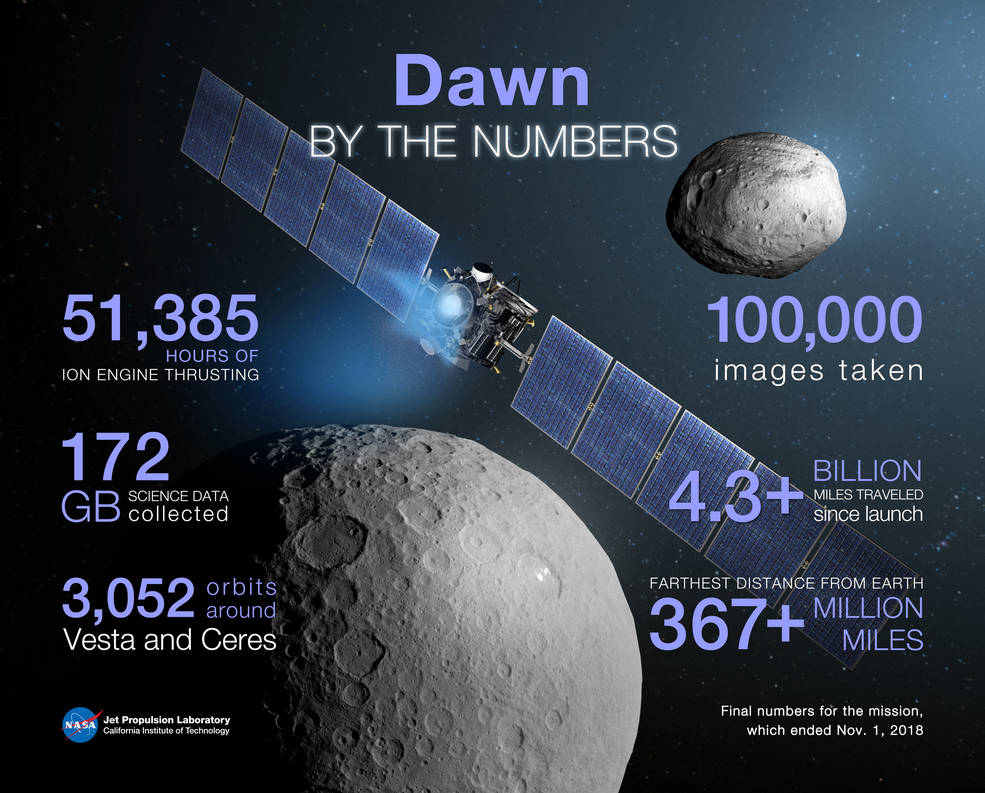
Infographic of Dawn’s many accomplishments.
With many thanks to JPL Historian Erik Conway for his contributions to this article.


























